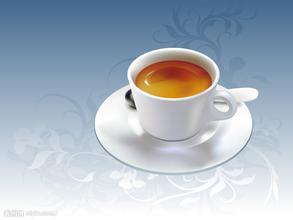Introduction of bitter, fragrant and delicious coffee from La Tisa Manor in Guatemala
Guatemala is located in the tropics. The northern and eastern coastal plain areas belong to tropical rain forest climate, while the southern mountainous areas belong to subtropical climate. There are two dry and wet seasons in a year. The wet season is from May to October, and the dry season is from November to April of the following year. Guatemala has a tropical climate on the narrow, fertile plains of the Pacific Ocean. The central plateau is also the cultural center of Guatemala, where temperatures are mild all year round at 1300 to 1800 meters, with daily temperatures ranging from 18 to 28 ° C, and colder January and February at higher altitudes. Annual precipitation is 2000-3000 mm in the northeast and 500-1000 mm in the south. [8]
topography
Two thirds of the territory of Guatemala consists of mountains and plateaus. The west has the Cuchumatanes Mountains, the south is the Madre Mountains, the west and south belong to the volcanic belt, there are more than 30 volcanoes, Tahu Murco volcano 4211 meters above sea level, the highest peak in Central America. Earthquakes are frequent. To the north lies the Petten Lowlands. There are narrow coastal plains on the Pacific coast. Most of the major cities are located in the intermountain basin in the south. The lowland plains of Petén in the north are tropical rainforests, and volcanoes in the central highlands can reach 4200 meters. [5]
hydrological
There are several lakes in Guatemala, the largest of which is Lake Izabal in the Department of Izabal and the deepest of which is Lake Atitlan in the Department of Solora. The main rivers flowing through Guatemala are the Motagua River, the Wusu Macinda River, the Chixo River and the Shaston River. The Chickasaw River is the source of the Usuma Sinda River.
Taste: bitter and fragrant, good taste.
High-quality coffee is mellow and has a good quality sour, quite well received, is the best material for mixed coffee.
Guatemala very hard beans to elegant lively acid, clean and tasteless, distinct layers, as well as green apple sour fragrance, berry fruit fragrance, jasmine flower fragrance, orange peel fragrance, green pepper fragrance, fruit sour feeling, chocolate sweet fragrance, and even the tail rhyme is known for smoky flavor.
Such rich regional flavor should be related to the water and soil of the eight major producing areas in the dangerous country. Among them, Antigua, Aikatango Valley, Etilan, San Marco and Huaiqiangsi five producing areas belong to volcanic geology. In addition, Vivienne Nango, Cobain and New Oriental three production areas, belong to non-volcanic highlands or tropical rain forest climate. Guatemala has more than 300 microclimates throughout its territory, the most in the world.
Guatemala Coffee Varieties
Guatemala coffee beans are mostly cultivated in volcanic soils at high altitudes, the highest Arabica variety. Due to the long ripening period, the beans are medium and dense (Guatemala coffee beans are graded not by particle size, but by the number of defects), and the beans are dark turquoise in color. Aroma, mellow, sweet and fresh pleasant unique acidity is its characteristic, because the aroma and taste of coffee beans are hidden in its acidity. Therefore, coffee beans with this characteristic can be called superior coffee beans. Name suitable for baking degree taste characteristics.
The average altitude of dangerous country is high, the coffee belt is distributed above 1500 meters, between 14 and 16 degrees north latitude, the most easy to grow extremely hard beans, all washed, of which 45% belong to the fine grade, the proportion is quite high, there is also a small amount of robusta.
The main coffee varieties are bourbon, tibika, kaduai and kadura, and there are also a few yellow bourbon, guixia and pakamala. The varieties are quite diverse, but it is also valuable to keep the ancient tibika and bourbon.

Important Notice :
前街咖啡 FrontStreet Coffee has moved to new addredd:
FrontStreet Coffee Address: 315,Donghua East Road,GuangZhou
Tel:020 38364473
- Prev

Introduction to the characteristics of coffee flavor and taste varieties in Fuyin Manor, Indonesia
Lived in the Indonesian archipelago about 1.5 million to 35000 years ago, known as the Javanese ape-man. Homo sapiens entered the area about 45000 years ago. A number of scattered feudal kingdoms were established in the 7th century AD. Recorded dynasties include the death of the Buddhist Sri Buddha (mid-7th century-1293) [4], later conquered by Manabacher, and the Kingdom of New Keshali, which controls the Strait of Malacca (122).
- Next

Introduction of Coffee Flavor and Taste characteristics in Incht Manor, Guatemala
United Fruit has its largest estate in Guatemala, and it also owns the Central Guatemala Inter-American Railway Company and Guatemala's only seaport. Driven by the United Fruit Company, the US Ministry of Foreign Affairs began a propaganda war against Guatemala to crack down on the Arbens regime in the name of anti-communism. The CIA cooperates with the opposition among Guatemalan soldiers.
Related
- Does Rose Summer choose Blue, Green or Red? Detailed explanation of Rose Summer Coffee plots and Classification in Panamanian Jade Manor
- What is the difference between the origin, producing area, processing plant, cooperative and manor of coffee beans?
- How fine does the espresso powder fit? how to grind the espresso?
- Sca coffee roasting degree color card coffee roasting degree 8 roasting color values what do you mean?
- The practice of lattes: how to make lattes at home
- Introduction to Indonesian Fine Coffee beans-- Java Coffee producing area of Indonesian Arabica Coffee
- How much will the flavor of light and medium roasted rose summer be expressed? What baking level is rose summer suitable for?
- Introduction to the characteristics of washing, sun-drying or wet-planing coffee commonly used in Mantenin, Indonesia
- Price characteristics of Arabica Coffee Bean Starbucks introduction to Manning Coffee Bean Taste producing area Variety Manor
- What is the authentic Yega flavor? What are the flavor characteristics of the really excellent Yejasuffi coffee beans?

